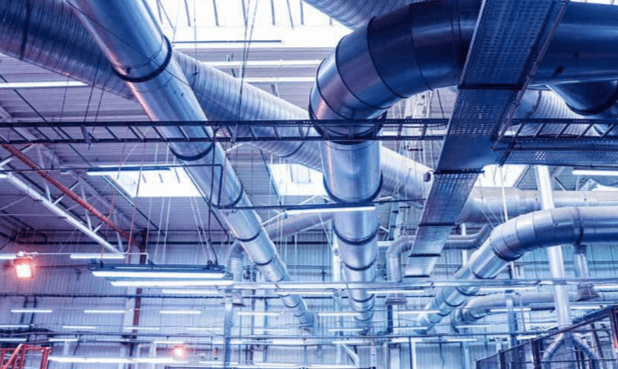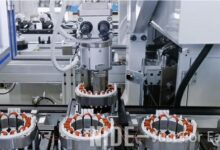Revolutionizing Comfort: The Future of HVAC with Smart Technologies

Cutting-edge technologies, including the Internet of Things (IoT), artificial intelligence (AI), and smart communication systems, are opening up new opportunities for HVAC innovations. These innovations make our home or office more comfortable, energy-efficient, and environmentally friendly. As a result, HVAC systems are becoming more compact, more functional and capable of creating a customized climate for each user, even within a single room. A prime example of such an HVAC system component is the smart thermostat. It will change the way we control the climate in our homes and offices.
Say goodbye to bundling up indoors with thick socks and a hat in the winter, or sweating profusely from the heat in the summer – forget it. Now consider HVAC maintenance services in Sacramento, where the climate is very similar to the U.S. average. Innovations in this area not only reduce energy bills, but also increase property values and contribute to a more environmentally sustainable future. By the end of this article, you’ll be equipped to implement HVAC innovations and even persuade your relatives and neighbors to do the same.
Smart Thermostats and the Internet of Things
Imagine coming home from work to find a comfortable microclimate waiting for you. You may have calculated how much it would cost to maintain a comfortable indoor temperature throughout the day. But forget about that. Meet smart thermostats – one of the most remarkable innovations in HVAC. They allow users to control the heating and cooling of their rooms using a smartphone or other Internet-connected device. You can turn on your home’s heating system while you’re still on the way home, so when you step over the threshold, you’re enveloped in familiar warmth.
A smart thermostat is a component of a digital home system connected to the Internet of Things. It can be linked to various smart devices for which temperature control is important. The main feature of a smart thermostat is its ability to control the temperature of various integrated devices: from central heating systems and boilers to individual heating devices such as boilers, radiators or electric heaters, as well as underfloor heating systems.
IoT Thermostats – how does it work:
- Remote control via web or mobile app: You connect the smart thermostats to the Internet and adjust your heating schedule remotely.
- Two scenarios of system operation based on: 1) habits and 2) schedule: In the first case, the smart thermostats analyze your climate preferences to optimize system operation according to the temperatures you experience more often than others. In the second case, the system automatically lowers the temperature when you are not home and raises it to a comfortable level before you arrive.
- Multi-zone control: Smart thermostats can adjust the temperature in different rooms independently of each other, and even within the same room-similar to how climate control works in a car.
- Hot water control: Some models allow you to customize your hot water.
- Geo-fencing: The system tracks your location and reacts when you approach your home.
- Draft detection: Smart thermostats can alert you to drafts and help you save energy.
- Installation: Installing a smart thermostat is easy. Turn off the heat, replace the old thermostat with a new one, connect the wires, and set it up.
An example of such a device is Google Nest, which adjusts the temperature based on your lifestyle. This makes digital thermostats a very personalized climate control tool, becoming an important element in a strategy to reduce energy consumption and carbon footprint. And while companies like Alpha Mechanical specialize in mechanical thermostats, they are also able to seamlessly integrate smart thermostats into smart home systems. From smart thermostat design and installation to maintenance and repair, smart HVAC services in Sacramento cover it all.
Installing a smart thermostat — a brief overview:
- Compatibility Check: Use an online tool to check if your system is compatible with the smart thermostat.
- Power Off: Turn off the old unit and the breaker that powers your heating and cooling system.
- Label Wires: Label the existing wires before removing the old thermostat plate.
- Install Base: Install the trim plate, if needed, and then the baseplate of the new thermostat.
- Connect Wires: Attach the wires to the corresponding connectors on the new thermostat.
- Mount Thermostat: Snap the display piece onto the baseplate.
- Power On & Setup: Turn the power back on and follow the setup process on the thermostat’s screen.
- Smartphone Sync: Sync the thermostat with your smartphone for remote control.
But IoT thermostats can do even more. Thanks to gateway integration technology with motion sensors and behavior pattern analysis, these devices can autonomously adapt to user behavior, weather conditions, and even energy prices, optimizing system performance and reducing energy costs. In this way, smart thermostats are transforming the HVAC field by providing users with a simple way to operate the heating and ventilation system in their own scenario through various terminals such as smartphones, tablets and other smart portable devices wherever they are.
Read also
Communication systems: Integration and smart control
The stability of digital HVAC systems depends on the quality of communication. The latter allows smart home components to communicate and be controlled together. Before seeking smart HVAC maintenance services in Sacramento, CA, you should make sure that the communication between the system components is reliable and stable – this state is characterized by debatable quality of mobile communication, confirms Yahoo. Since HVAC communication systems play a key role in ensuring that systems operate efficiently, let’s take a look at a few important aspects:
- Integrated Systems: For seamless integration between thermostats, ventilation systems, and climate comfort devices, robust cellular or 5G connectivity is essential.
- Internet of Things (IoT): In modern HVAC systems, sensors, and networks collect data on equipment status. This dynamic data analysis optimizes system performance. Building management systems automatically respond to changes in the indoor and outdoor environment by regulating heating, cooling, and ventilation within a building.
Green HVAC systems
The criterion for smart HVAC systems is becoming their environmental sustainability. The advent of green technology has led to the development of systems that use renewable energy sources, such as solar panels and wind turbines. Geothermal heating and cooling is also gaining popularity because it reduces dependence on fossil fuels and lowers carbon emissions. Smart thermostats will switch between primary and alternative sources to optimize energy costs.
Software and automation
Software is what ties the various smart home systems – lighting, HVAC, multimedia, household appliances and security – together. Advanced soft solutions collect data on the operation of all the systems integrated into the smart home, analyze it, and generate optimal scenarios in the form of optional recommendations for the user. Such systems also self-diagnose problems and notify HVAC service maintenance companies in Sacramento, when repairs are needed, minimizing downtime. For futuristic and in-depth details on how smart homes work, read on How to Geek.
Conclusion: The IoT future
Picture a city where the roads “know” when you’re heading to work, and traffic lights turn green just for you. As you arrive at the office, smart glass adjusts the lighting to match your mood, and your coffee is ready. Meanwhile, a virtual assistant informs you that your business has successfully thwarted cyberattacks. Regardless of the weather outside, the HVAC system ensures a perfect climate for your comfort. These elements are all part of the bigger picture – the concept of smart homes and IoT cities.
What if you could start by installing smart thermostats? Or prioritize green systems and automated software? These are just some of the technologies that will shape the future of the industry. Alpha Mechanical specialists wholeheartedly believe in their potential, driven by the surging demand for intelligent systems. As we move towards more sustainable and intelligent energy use, HVAC systems will play a key role in creating comfortable and environmentally responsible environments for all. So, don’t be late – join the smart revolution!








